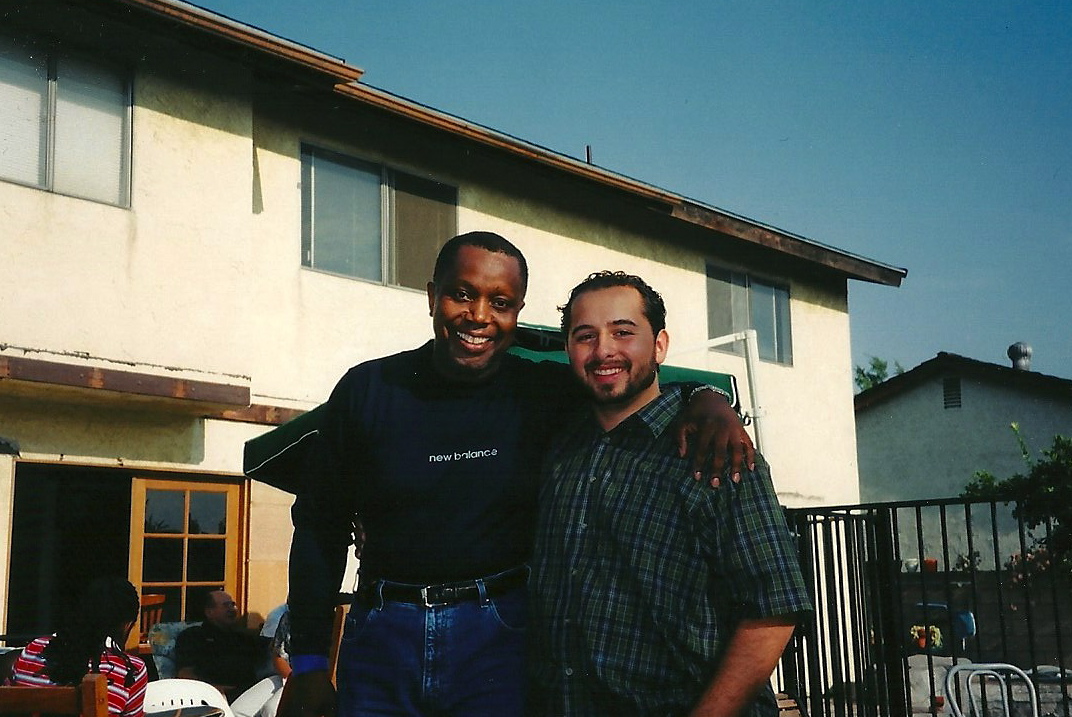The Evolution of Timber Marlow
 Upon finishing an overwhelmingly mediocre high school career and having not planned for anything beyond Grad Night at Disneyland, I enrolled at Chaffey College. After spending five years earning my two-year degree—and a brief layover at Cal State Fullerton—I transferred to Cal State San Bernardino, where I fell in love with the craft of creative writing. It was at Cal State San Bernardino where I first dreamt up the creative potential of marrying cannibalism with literary fiction.
Upon finishing an overwhelmingly mediocre high school career and having not planned for anything beyond Grad Night at Disneyland, I enrolled at Chaffey College. After spending five years earning my two-year degree—and a brief layover at Cal State Fullerton—I transferred to Cal State San Bernardino, where I fell in love with the craft of creative writing. It was at Cal State San Bernardino where I first dreamt up the creative potential of marrying cannibalism with literary fiction.
But long before that ever happened, my godfather, Willard E. Pugh, starred in Wes Craven’s 1985 horror film, The Hills Have Eyes Part II. At eight years old, this movie was my first introduction to cannibalism and for at least a week after watching it, I refused to go upstairs by myself for fear of running into Pluto, the film’s scary bald cannibal.
While at Cal State San Bernardino I took a humanities class that, among other things, persuaded me to become a vegetarian. Both the lectures and the literature in the class presented me for the first time with a behind-the-scenes look at how animals raised for consumption are treated (and often mistreated). I felt like there was a dramatic core there worth writing about and decided the most dynamic way to harness it would be to replace the animals with people. A couple years later, my first crack at cannibal literature—a short story called “Footsteps”—was published in The Pacific Review.
For about a year or two, I attempted to write my first novel. While, in its completed state, there are flashes of what I like to think of as fine literary prose, overall it just wasn’t as good as I wanted it to be. Of course, I didn’t come to this conclusion by myself. I have a tall pile of rejection letters from agents and publishers alike, all of them echoing the same sentiment—thanks, but no thanks. With my ego sufficiently bruised and my dreams all but crushed, I became very cynical about the publishing industry and decided that, if I was going to get published, I needed to pander to what I imagined the system wanted.
In the winter of 2005, I decided to write a novel about a female serial killer, figuring this would have the publishing world licking their chops. I knew that if I was going to write a story about a killer, that, in order to keep myself interested, the killer would have to be the main character. I also knew that making my main character a killer would be a tricky endeavor, because most readers don’t want to sympathize with a killer—they would rather be scared of them for 300 pages or so, before watching them get their comeuppance.
So, my first order of business was to figure out why my killer was a killer and, more importantly, why my reader should care about her. I decided my killer killed not because she was a sociopath, but because she was raised in an environment where killing was routine, just a normal part of everyday life. I then decided that an environment like that couldn’t reasonably exist in mainstream society, so it made sense that my killer should be born and raised in a cult. In order to make the killing in my fictional cult a reasonable necessity, I decided its members were cannibals. In order to make the killing routine, I decided they should have public sacrifices two or three times a month, which my killer would grow up watching. In order to isolate my cannibal cult from the real world—something I figured was necessary in order to ensure the enclosed nature of this strange community—I tucked it away on a combine in the San Bernardino Mountains. I named my killer Timber Marlow.
As Timber’s story unfolded, I found myself becoming less cynical about publishing. I also found that I was no longer writing this novel to pander to the publishing industry or to nurse my bruised ego, but rather because it was the best story I had to tell and I felt an overwhelming responsibility to tell it as well as I could. I also came to realize that this was a much more personal story than I intended it to be, that Timber was, in big and small ways, sewn from fragments of my own life and experiences.
I was born to an overwhelmingly religious family, half of whom were Catholic and the other half Jehovah’s Witnesses. I attended church every Sunday of my life at St. Peter and St. Paul’s Catholic Parish. Being Catholic was a choice someone else made for me, a choice for which I had no say in the matter. And it was a choice I never questioned, because, in my small world, I never knew anything different. Though I didn’t stop attending Mass until I was 18, I never really felt connected to the Catholic faith.
I spent the next decade or so trying to sift through what I genuinely believed about the world as opposed to what I was taught to believe. It was about this time, ten years later, that I discovered Timber Marlow. As I got deeper into her story, I came to realize that Timber Marlow wasn’t really a killer after all—at least not a serial killer. She was just a kid who, through lessons and observations, cultivated a very absurd view of the world. She was never given an alternative view to these lessons, nor did she have a say in what she was raised to believe. And it wasn’t until she decided to run away from all she had known in an attempt to understand the world around her that her life would truly begin.


